Nautical adventures in João Pessoa: Diving, natural pools and historical riches
The boat and diving trips off the coast of João Pessoa offer a variety of experiences, including diving, natural pools and a wealth of historical content.
The region’s beaches are renowned for their boat trips, which cater for all audiences and ages, from diving enthusiasts to those looking for a culturally focused trip.
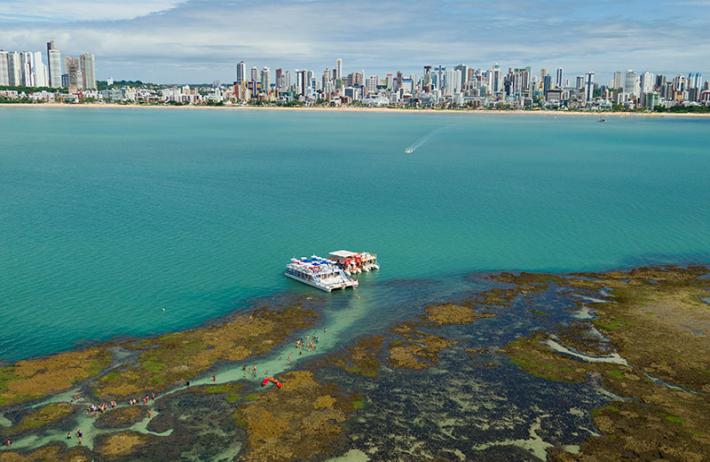
A variety of boat trips
In João Pessoa, Paraíba, there are options to suit all tastes. Visitors can choose between
- Diving in places rich in marine biodiversity.
- Natural pools that provide an ideal environment for relaxation and fish watching.
- Historical tours that explore the local culture and maritime heritage of the region.
Tips for enjoying the tours
An important tip for anyone planning a boat trip is to pay attention to the tide table. The weeks of the full moon and new moon are best for trips that depend on low tide, ensuring a safer and more enjoyable experience.
Natural pools of Picãozinho
The natural pools of Picãozinho, located in front of Tambaú Beach, are one of the main attractions for snorkelling and fish watching. This spot is famous for its warm, crystal-clear waters, which become a veritable marine aquarium at low tide.
Red sand beach
One of the most popular walks for tourists is the one to Praia de Areia Vermelha. This beach is actually a sand bar that juts out into the sea and is only visible at low tide.
During this time, the place fills up with visitors and vendors, offering a unique and ephemeral experience, as the sand is only accessible for a short time.
As the tide rises, several boats arrive on the island and as the water rises, the boats return to the beach, allowing visitors to make the most of the place before it disappears under the water.
Videos – Boat trips and snorkelling off the coast of João Pessoa


Piscinas naturais de Picãozinho em João Pessoa03:06

Piscinas naturais do Seixas em João Pessoa03:48
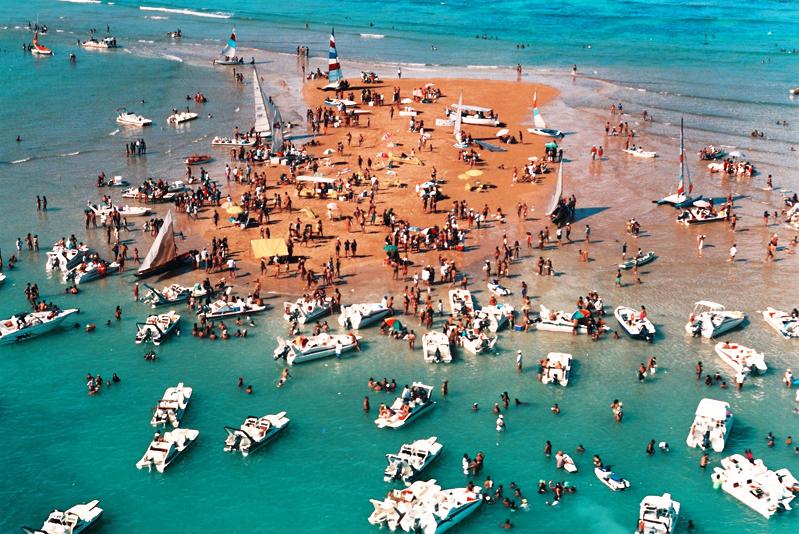
Ilha de Areia Vermelha na Paraíba04:55

Naufrágio do Navio Queimado02:09
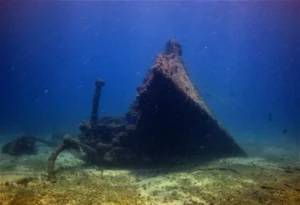
MERGULHO NO QUEIMADO E ALVARENGA EM JOÃO PESSOA01:41
Boat and diving trips off the coast of João Pessoa PB, Paraíba
- Natural pools of Picãozinho
- Seixas natural pools
- Red Sand Island
- Alvarenga Shipwreck
- Queimado Shipwreck
- Alice Shipwreck
1. Boat trips to the natural pools of Picãozinho
The Natural Pools of Picãozinho are one of the most enchanting destinations for boat trips in the region.
Located about 2 kilometres from the Tambaú beach, these pools are part of a coral reef that, at low tide, becomes a veritable marine aquarium.
The warm, crystal clear waters allow visitors to feed and dive with colourful fish, making this an ideal spot for divers, with depths ranging from 1 to 3 metres.
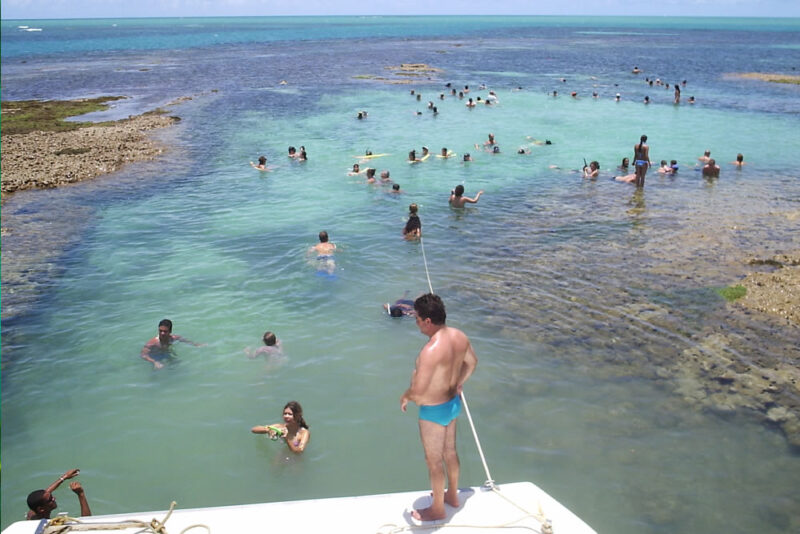
Duration and access
The sea trip to Picãozinho takes an average of four hours and is very popular with holidaymakers.
Boats leave regularly from the Hotel Tambaú and take around 15 minutes to reach their destination.
It’s important to note that the pools can only be visited at low tide, so it’s important to check the tide table before you go.
Best time to visit
The best time to visit the natural pools of Picãozinho is between September and March. During this period, the weather conditions are generally more favourable, with pleasant temperatures and less chance of rain.
In addition, the weeks of the full moon and new moon are the best for trips that depend on the low tide, providing an ideal experience for snorkelling and observing marine life.
History and attractions of Picãozinho
Picãozinho has been a popular tourist destination since the 1980s. The place is known not only for its natural beauty, but also for the rich marine life that can be observed. While snorkelling, visitors can come into contact with different species of fish, seaweed and coral, making the experience even more memorable.
Visitors also have the opportunity to hire buoys and order underwater photographs to add a special touch to their adventure.
In addition, the boats that carry out the tours act as aquatic restaurants, offering meals to holidaymakers.
It is important to note, however, that food consumption is only permitted on board and that it is forbidden to take any food into the water.
2 Boat trips to the Seixas natural pools
The Seixas Natural Pools are the easternmost in the Americas, located 800 metres from Praia da Penha.
This is an unmissable destination for those seeking natural beauty and tranquillity.
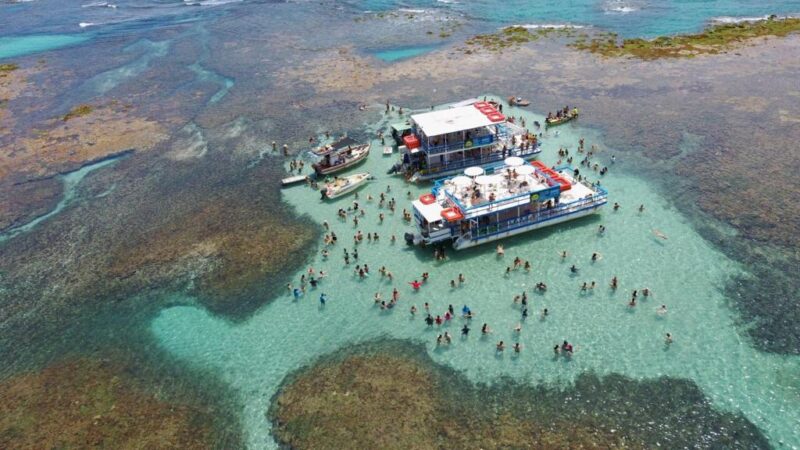
Tour description
Departing at low tide from the MUXIMA Restaurant in Praia da Penha, we reach one of the most beautiful reef ecosystems in Brazil.
The warm, crystal clear water forms pools that vary in depth from 1 to 3 metres, with an average depth that makes it ideal for both swimming and diving.
The trip takes an average of 2.5 hours, with a crossing of just 15 minutes to the site. The corals, visible at low tide, are located 500 metres off the coast of Seixas beach.
A special destination
Known as the Brazilian Caribbean, it attracts divers and tourists seeking tranquillity, beauty and contact with various marine species.
Unlike Picãozinho, the Seixas pools are much larger, allowing boats to stop.
3 Boat trips to Areia Vermelha Island
The boat trip to Areia Vermelha Island takes visitors to a sandbank that appears at low tide, boarding at the old MARCÃO Bar on Poço Beach, in the parish of Cabedelo.

Tour description
It takes 15 minutes by catamaran to reach the island of reddish sand, located 800 metres from the beach, where clear pools of water form, ideal for swimming. The trip takes about 3 hours.
Red Sand Island is a destination that combines different programmes depending on the season. Visitors can enjoy a secluded paradise with calm waters or take part in more lively activities, as the island is home to the largest fleet of jet skis and boats on the Paraiba coast.
Characteristics of the island
The island is a temporary sandbank that only appears at low tide, with a maximum height of 0.4 metres, when the sand is exposed. It is impossible to visit at very high tide.
The tourist attraction is part of the Areia Vermelha Marine State Park and can be visited by boat, jet ski or catamaran, taking around three hours depending on how long you stay on the island.
Origin of the name
The name Ilha de Areia Vermelha (Red Sand Island ) comes from the reddish colour of the sand that makes up the island.
This colour is due to the presence of minerals and sediments which, when exposed at low tide, give the island its unique character.
The combination of the red sand and the region’s clear waters creates a striking visual contrast, making the island a popular destination for tourists and visitors alike.
Experience the island
The island of Areia Vermelha offers beautiful views of the Atlantic Ocean and the Paraíba coast, with the comfort of tables by the sea and floating bars that cater to visitors to Areia Vermelha.
4 Diving in the shipwrecks off the coast of João Pessoa
In addition to its rich marine fauna, the Paraíba coast also hides a wealth of history underwater, which can be explored through diving.
Several dive operators in João Pessoa offer trips and expeditions to shipwrecks. They provide all the necessary equipment, including tanks, regulators, wetsuits and detailed instructions to ensure a safe and enjoyable dive.
Dive Operators
Dive operators offer 3 shipwreck tours:
- Alvarenga Shipwreck
- Queimado Shipwreck
- Alice Shipwreck
The tour departs from the dive centre at Camboinha, in Cabedelo, in the greater João Pessoa area. Two of the boats are on the Bessa tip line and another on the Mag Shopping line in Manaíra. The furthest is about 9 kilometres off the coast of João Pessoa.
Biological heritage
Ships constitute an enormous biological heritage, providing shelter and refuge for a wide variety of species, including turtles, nurse sharks, rays, fish, crustaceans and corals.
4.1 The Alvarenga shipwreck
The Alvarenga is one of the most popular shipwrecks to dive in João Pessoa. Located about 7 kilometres off the coast, the ship sank in the 1950s and has since been transformed into an artificial reef.
The depth varies between 14 and 18 metres and is suitable for intermediate to advanced divers.
The Alvarenga had a dual role in the early to mid 20th century.

Firstly, they were used to transport cargo to ships that couldn’t dock because of their draught or the availability of berths (Brazil had very few ports until the mid-20th century). In addition, many alvarengas were towed by ships to supplement a specific cargo on cabotage voyages, also due to the limited availability of steamers in the early days of Brazilian navigation.
Very little is known about this wreck, which apparently sank due to strong waves while being towed to northern ports.
4.2 The Burnt Shipwreck
This is another popular wreck site, located about 5 kilometres from the coast. The ship lies at a depth of about 18 metres. The area around the wreck is rich in marine life, including corals, colourful fish and other marine life.
Built for the American SS Co. in 1867, she was sold to Nathaniel Winsor in 1868 and then to the U.S. & Brazil Mail SS Co. in 1871.

The ship was used for postal services between the two countries.
On its second voyage, from Rio de Janeiro to the United States, after passing through the port of Recife, it caught fire at the beginning of the night for unknown reasons and sank at two o’clock in the morning, 12 miles off the coast of Tambaú beach.
Local fishermen, seeing a bright light on the horizon, went there in 6 rafts and found a large steamer on fire, and 81 people in 8 schooners rescued all the crew and passengers.
4.3 Wreck of the Alice
This wreck is less well known, but just as interesting. It lies at a depth of 14 metres and is suitable for intermediate divers. The structure of the ship is relatively intact and offers incredible opportunities for underwater exploration and photography.
The 840-tonne steamship Alice left the port of Recife, PE, on 25 June 1899, bound for Mossoró in Rio Grande do Norte, where it was loaded with salt for the Salinas company, based in Rio de Janeiro.

On its way to the capital, it stopped in Paraíba, where it received two thousand sacks of cotton.
At the end of 19 August, it left the port of Paraíba, heading south.
Soon after crossing the Bar, the ship began to take on water and the efforts of Captain Francelino Duarte were in vain.
Faced with the impossibility of draining the water that was pouring in, the order was given to put to sea. The intention was to return to port and, if that wasn’t possible, to bring the steamer ashore.
But there was no more time for the Alice. About four miles south of the bar and 3.5 miles from Bessa beach in João Pessoa, the Alice was sinking with her bow towards the land.
When there was no hope of saving the ship, the captain and crew took to the dinghies and reached the port of Cabedelo, PB, safely in the middle of the 20th.
The hull sank to the bottom at a depth of 14 metres, with only the masts and spars remaining above water.
According to some authors, but without documentary proof, the Alice was launched on 10 October 1866 under the name Mariana for the firm of Francisco Gustavo de Oliveira Roxo and João Domingos de Oliveira.
The steamer was chartered by the Brazilian government to transport Brazilian troops in the war against the Paraguayan tyrant.
On 30 March 1869, Prince Imperial Gastão de Orleans (Count d’Eu) boarded the ship to take command of the Brazilian army.
He arrived in Montevideo on the 5th of April 1869.
There are several intriguing versions of the conditions under which the shipwreck occurred, but so far no accounts have been confirmed by primary sources. Depth from 7 to 14 metres
North East Tourist Guide
Publicações Relacionadas
This post is also on:
![]() Português
Português ![]() English
English ![]() Deutsch
Deutsch ![]() Español
Español ![]() Français
Français



















